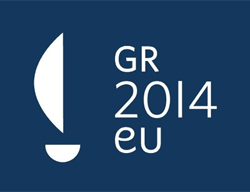Institutions of the European Union

History
The ESC was set up by the 1957 Rome Treaties in order to involve economic and social interest groups in the establishment of the common market and to provide institutional machinery for briefing the European Commission and the Council of Ministers on European Union issues.
The Single European Act (1986), the Maastricht Treaty (1992), the Amsterdam Treaty (1997) and the Treaty of Nice (2000) have reinforced the EESC's role.
The European Economic and Social Committee (EESC) is a consultative body that gives representatives of Europe's socio-occupational interest groups, and others, a formal platform to express their points of views on EU issues. Its opinions are forwarded to the larger institutions - the Council, the Commission and the European Parliament. It thus has a key role to play in the Union's decision-making process
Functions
- Consultation of the EESC by the Commission or the Council is mandatory in certain cases, in others it is optional;
- The EESC may adopt opinions on its own initiative;
- It acts as a forum for the single market and has hosted, with the support of other EU bodies, a series of events aimed at bringing the EU closer to the people.
Members
The 344 members of the EESC are drawn from economic and social interest groups in Europe.
Members are nominated by national governments and appointed by the Council of the European Union for a renewable 4-year term of office. The next renewal will occur on October 2010.
They belong to one of three groups:
- Employers;
- Employees
- Various Interests
The Economic and Social Councils and similar institutions were set up and work in almost all the EU Member-States. Some of these are constitutional assemblies.
Interesting fact
The Economic and Social Council of France (1958), being one of the first established important institutions in Europe and it is the third constitutional assembly under the Constitution of the Republic of France.







 Svejo
Svejo Twitter
Twitter Link4e
Link4e Pipe
Pipe Web-bg
Web-bg Bghot
Bghot Lubimi
Lubimi Novinitednes
Novinitednes Ping
Ping Facebook
Facebook Myspace
Myspace Mix
Mix Del.ico.us
Del.ico.us Reddit
Reddit Digg
Digg Stumbleupon
Stumbleupon Myweb Yahoo
Myweb Yahoo Google Bookmarks
Google Bookmarks Google Buzz
Google Buzz

